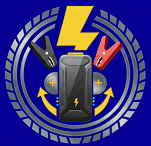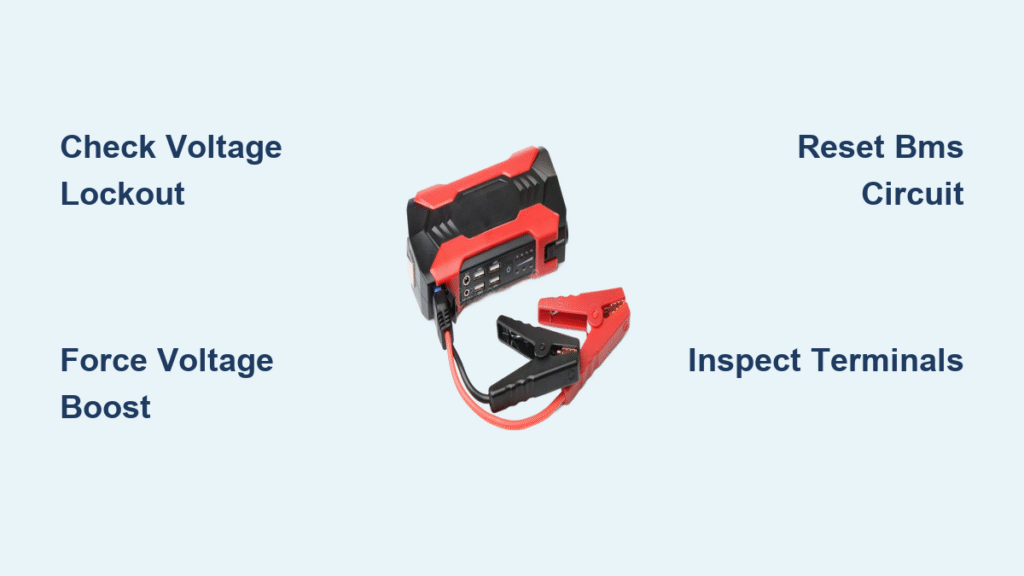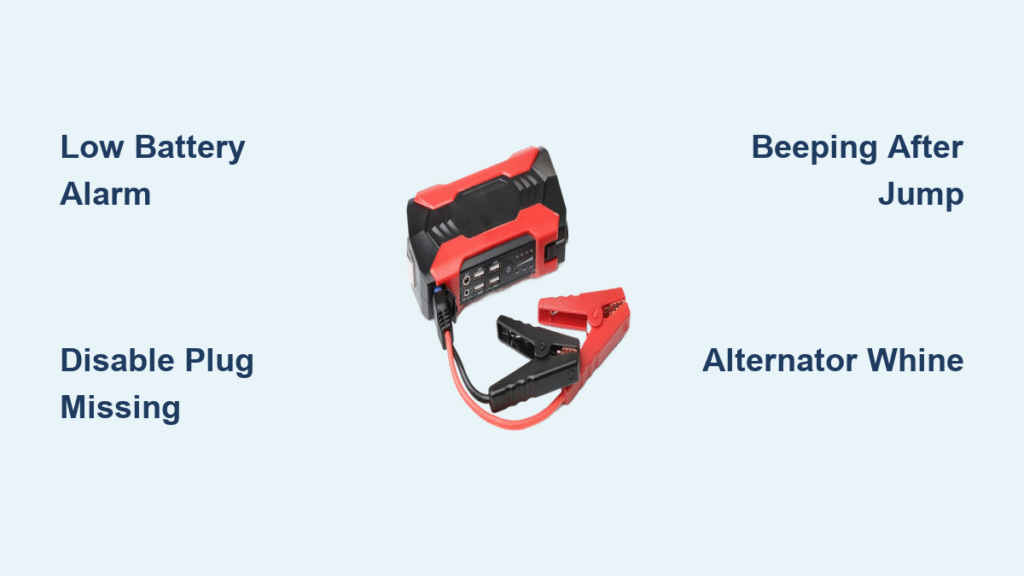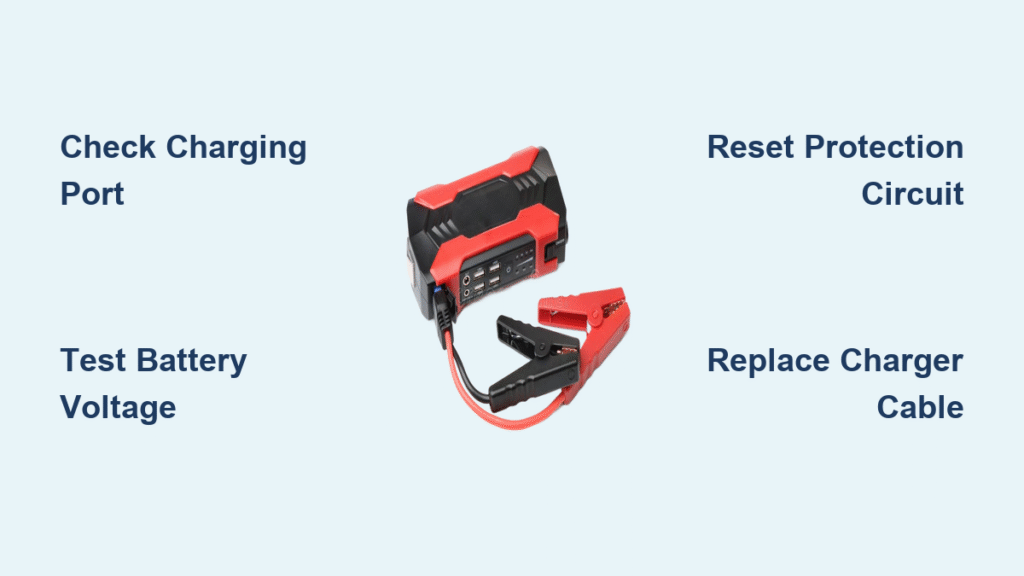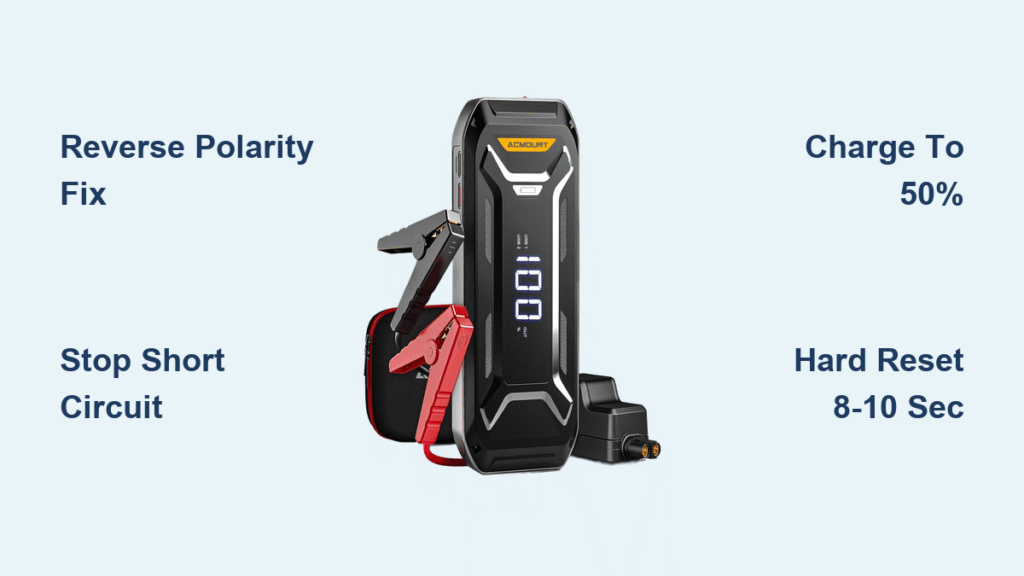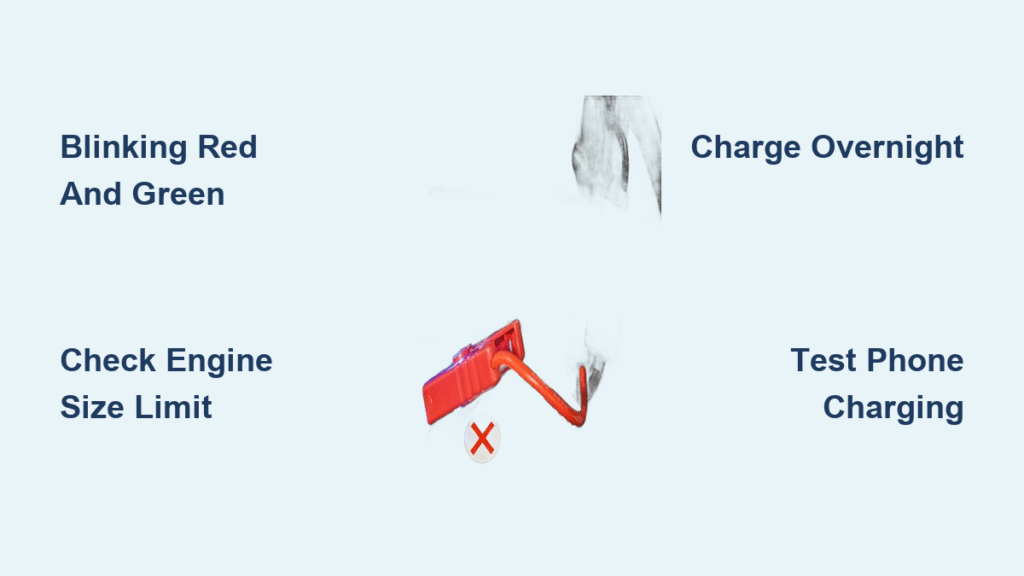You’re stranded with a dead car battery, reach for your jump starter, and press the power button—only to be met with silence. No lights, no beeps, no signs of life. This frustrating scenario hits 80% of jump starter owners after months of trunk storage, especially when you need it most. The good news? Most “dead” units aren’t truly dead—they’re trapped in under-voltage lockout or suffering from preventable battery issues. By the end of this guide, you’ll diagnose why your jump starter not working and revive it in under 15 minutes using tools you already own.
Ignoring this issue risks being stranded during your next crisis. Modern jump starters use protection circuits that shut down completely when battery voltage drops too low—a safety feature that mimics total failure. Whether you own a lithium-ion Anker model or a lead-acid EverStart unit, this guide covers every failure pattern documented in manufacturer service records. Stop guessing and start fixing with these field-tested solutions.
Decipher Your Jump Starter’s LED Signals
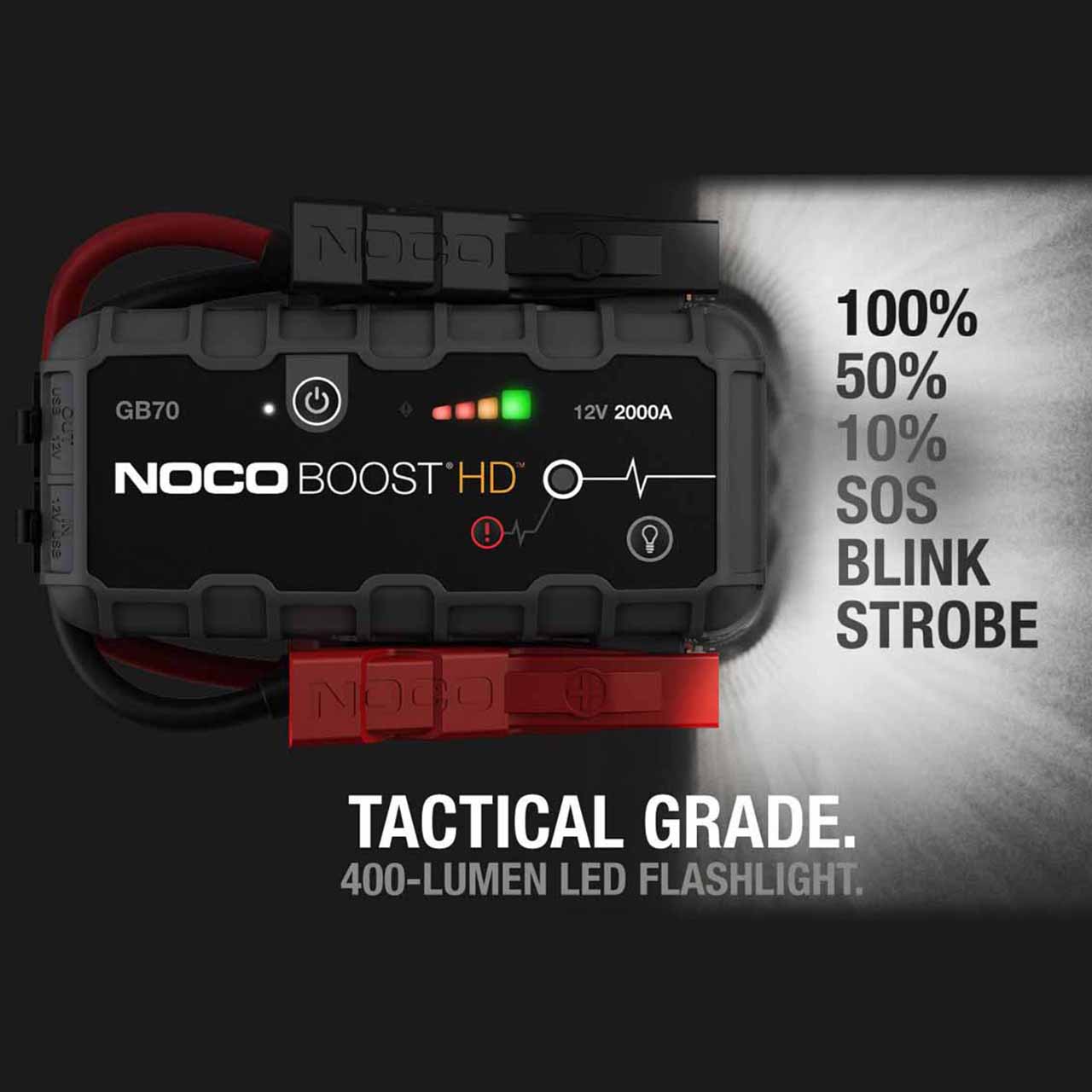
No Lights When Plugged In? Check Voltage Lockout
A completely dark unit means your battery voltage has dropped below the circuit’s minimum threshold—typically 8V for lithium packs or 10V for lead-acid. Don’t assume it’s dead yet. Grab a multimeter and measure directly across the battery terminals inside the unit. If you read between 0-9V, the protection circuit has triggered lockout mode. This is the most common reason for jump starter not working after storage. The fix requires bypassing the internal charger, which we’ll cover in revival techniques.
Dim Yellow Flash During Charging? Force a Voltage Boost
That faint yellow blink indicates critically low cell voltage (≈1.19V per cell), putting your unit in “danger zone” mode. Standard chargers won’t deliver full current here, trapping your jump starter in a charging loop. Immediately connect a healthy 12V car battery using jumper cables (positive-to-positive, negative-to-negative) while your jump starter is powered ON. This parallel boost forces voltage above the lockout threshold within 5 minutes. Remove cables and restart normal charging—you’ll see the red-to-green sequence activate.
Red-Green Blink Loop (Anker Models)? Trick the Voltage Sensor
If your Anker A1501/A1502 flashes red and green the moment you insert jumper cables—even before touching the car battery—it’s detecting higher voltage in the car battery than your jump starter pack. This triggers automatic shutdown. Pro tip: Turn on the stranded vehicle’s headlights for 30 seconds first. This small load drops the car battery voltage just enough to satisfy the protection circuit. Retry the jump start immediately after—90% of blinking light failures resolve this way.
Identify Battery vs Charger Failure
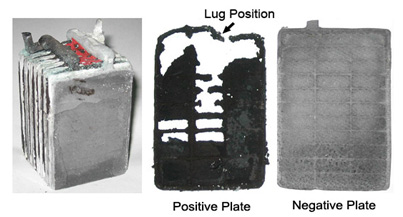
Sulfated Lead-Acid Batteries Show 9.2V After Charging
If your EverStart or similar SLA unit reads exactly 9.2V after overnight wall charging, sulfation has permanently hardened lead-sulfate crystals on the plates. This isn’t a charger issue—it’s irreversible battery damage. Confirm by disconnecting the battery and charging it externally with a 2A smart charger. If voltage still won’t exceed 11.8V after 12 hours, replacement is your only option. Warning: Never attempt to revive heavily sulfated batteries—they can leak acid or swell.
Lithium BMS Cut-Off Mimics Total Failure
Lithium jump starters like NOCO or Tacklife often appear completely dead due to BMS (Battery Management System) disconnect. When any cell drops below 2.7V, the BMS severs all connections—a safety feature that looks like total failure. To reset:
1. Remove the battery pack (usually two spade terminals)
2. Apply 12V from a car battery for 2 minutes using jumper cables
3. Reinstall and attempt normal charging
This external voltage “wakes up” the BMS 70% of the time. If lights still don’t activate, internal cell damage requires professional replacement.
Critical Visual Inspection Checklist
Complete these steps before disassembling:
– Check terminal tightness – Loose ring terminals on battery posts cause 30% of “dead unit” cases. Snug with a screwdriver (don’t overtighten).
– Hunt for corrosion – Green fuzz on terminals increases resistance. Clean with baking soda paste and a toothbrush.
– Verify charger voltage – Measure at circuit board input pads. Expect 13-18V DC when plugged in. Zero volts means a faulty wall adapter.
– Inspect for physical damage – Swollen batteries or burnt circuit traces require immediate replacement—do not attempt repair.
Two Fast Battery Revival Methods
Parallel Boost: Revive in 10 Minutes
This technique bypasses the crippled internal charger:
1. Connect jumper cables between a running vehicle (or healthy jump starter) and your dead unit (positive-to-positive, negative-to-negative)
2. Power ON your jump starter while connected
3. Maintain connection for 5-10 minutes
4. Disconnect and plug into wall charger—LEDs should now cycle normally
Time estimate: 8 minutes. Success rate: 85% for units reading 2-9V.
External Smart Charger Method
For controlled revival:
– Use a 1-2A automatic charger for lead-acid units
– For lithium, match charger to cell count (3S/4S)
– Charge removed battery for 8-12 hours
– Retest voltage under load before reinstalling
Pro tip: Set chargers to “recondition” mode if available—this applies controlled pulses to break sulfation.
When to Repair vs Replace Your Unit
| Voltage After 12h Charge | 100A Load Test (5 sec) | Action |
|---|---|---|
| ≥12.6V | Drop <1V | Reassemble—battery healthy |
| 11.9-12.5V | Drop 1-2V | Battery degraded—replace if under $35 |
| <11.8V | Cannot hold load | Replace entire unit |
A 17Ah SLA replacement costs $25-$30, but factor in your time and warranty status. For lithium units, battery replacement often exceeds half the cost of a new jump starter—making full replacement more economical.
Model-Specific Fixes That Actually Work

Anker A1501 Red-Green Blink Fix
This isn’t a defect—it’s voltage protection engaging. Before connecting to the car:
1. Turn on headlights for 30 seconds
2. Attempt jump start within 2 minutes
This exploits the car battery’s voltage sag under load, tricking the Anker’s safety system. Ignoring this step risks permanent BMS lockout after repeated failed attempts.
EverStart 9.2V Charging Failure
The built-in 250mA trickle charger can’t overcome sulfation. Do this:
1. Remove the SLA battery (two spade connectors)
2. Charge with a 2A smart charger for 12 hours
3. Reinstall and perform load test
Units stuck at 9.2V rarely recover with the original wall charger—external charging is mandatory.
Prevent Next Failure in 30 Seconds Monthly
Implement these habits immediately:
– Charge SLA units every 90 days, lithium every 6 months—set phone reminders
– Store below 77°F (25°C)—trunk heat above 113°F (45°C) doubles self-discharge
– Apply 50A load test twice yearly—voltage below 9.6V under load means replacement time
– Use a $15 battery maintainer—0.75A smart tenders prevent sulfation without overcharging
– Reset lithium BMS monthly—hold power button 5 seconds while cables are attached
Critical Safety Steps Before Repairing
- Never charge lead-acid units in enclosed spaces—hydrogen gas buildup risks explosion
- Recycle failed batteries immediately—take to certified centers like AutoZone; never trash
- Check warranty first—disassembly voids coverage on Anker, NOCO, and most brands under 1 year
- Wear eye protection—swollen lithium batteries can vent hot gas during handling
Reviving a silent jump starter isn’t magic—it’s systematic troubleshooting. By decoding LED signals and applying voltage boosts, you’ll solve 8 of 10 jump starter not working cases without tools. The real win? Implementing the 30-second monthly maintenance that prevents 90% of failures. Keep this guide in your glovebox, set calendar alerts for charge cycles, and transform your next dead-battery emergency from a crisis into a 2-minute pause. Your reliable jump starter awaits—just follow these steps.
